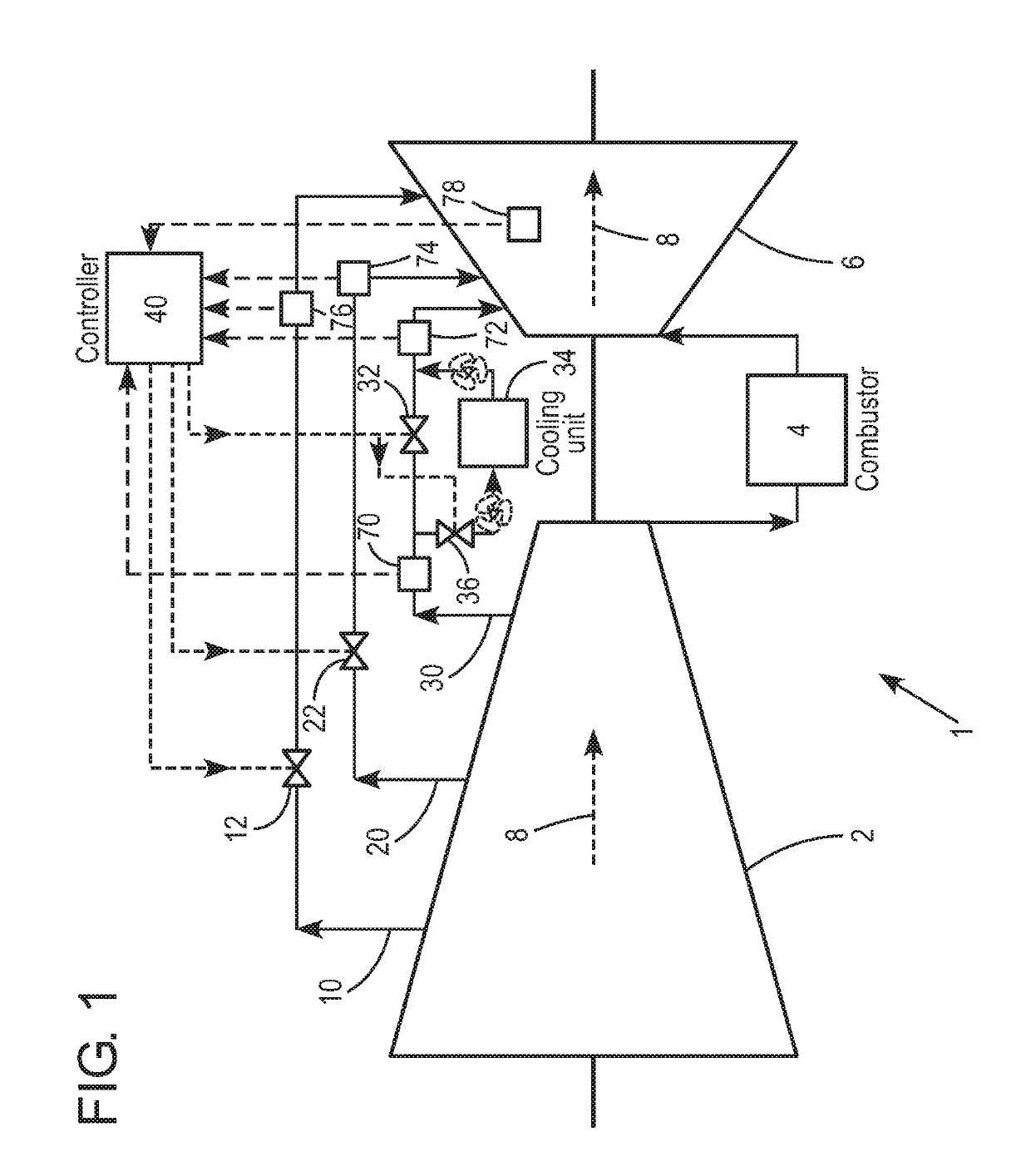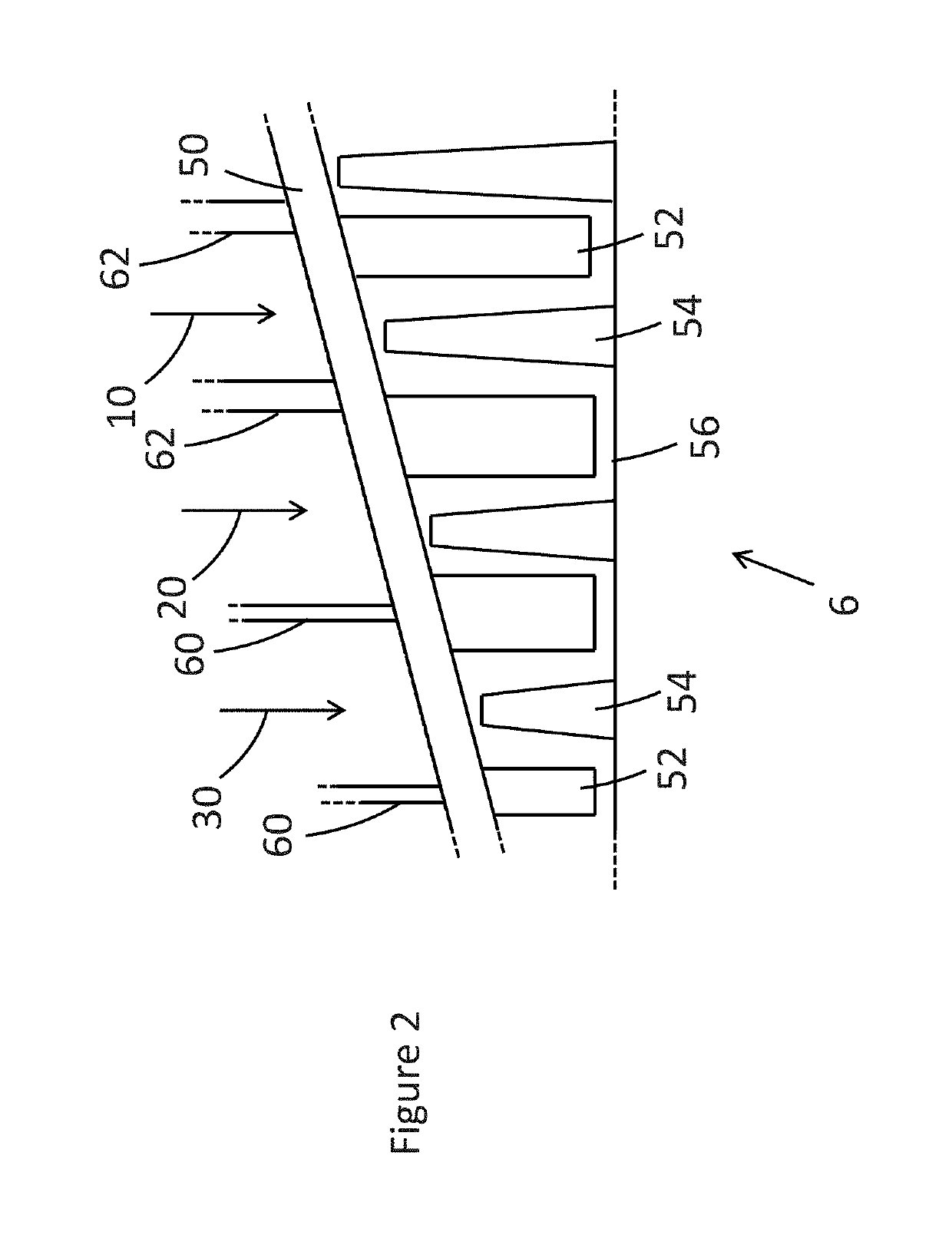Gas turbine cool-down phase operation methods for controlling turbine clearance by adjusting air flow rate
a technology of air flow rate and turbine, which is applied in the direction of engine cooling apparatus, leakage prevention, jet propulsion plants, etc., can solve the problems of significant thermal expansion and leakage through, and achieve the effect of reducing or minimising the cooling of the turbine vane carrier, reducing the running clearance, and increasing the performance of the gas turbin
- Summary
- Abstract
- Description
- Claims
- Application Information
AI Technical Summary
Benefits of technology
Problems solved by technology
Method used
Image
Examples
Embodiment Construction
[0018]A gas turbine 1 is described with reference to FIG. 1. The gas turbine 1 comprises a compressor 2, a combustor 4 downstream of the compressor 2 and a turbine 6 downstream of the combustor 4.
[0019]Air flows into the compressor 2 where it is compressed, sent to the combustor 4 and mixed with fuel in the combustor 4. The hot gases resulting from combustion of the air-fuel mixture in the combustor 4 are sent to the turbine 6 and expanded in the turbine 6. Dashed arrows 8 show the general flow direction of air through the compressor 2 and of hot gases through the turbine 6. This fluid flow direction 8 also corresponds to the direction of the axis of the gas turbine 1.
[0020]For cooling, a portion of the air in the compressor is bled off at three locations, resulting in pipes directing first, second and third cooling air flows, namely high-pressure cooling air 30, medium-pressure cooling air 20 and low-pressure cooling air 10 respectively. Each of the pipes has a control valve, namel...
PUM
 Login to View More
Login to View More Abstract
Description
Claims
Application Information
 Login to View More
Login to View More - R&D
- Intellectual Property
- Life Sciences
- Materials
- Tech Scout
- Unparalleled Data Quality
- Higher Quality Content
- 60% Fewer Hallucinations
Browse by: Latest US Patents, China's latest patents, Technical Efficacy Thesaurus, Application Domain, Technology Topic, Popular Technical Reports.
© 2025 PatSnap. All rights reserved.Legal|Privacy policy|Modern Slavery Act Transparency Statement|Sitemap|About US| Contact US: help@patsnap.com


